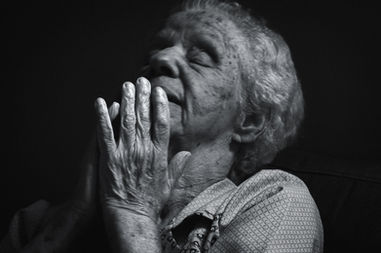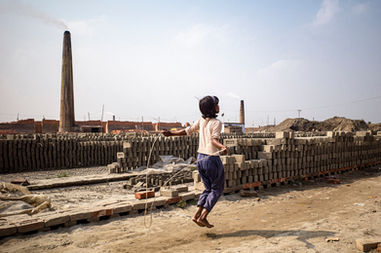
UNFIGURED
Nasos Karabelas transforms the human body into a site of emotional flux — where perception fractures and inner states become visible form.
August 3, 2025
PICTORIAL STORY
PHOTOGRAPHY Nasos Karabelas
STORY Melanie Meggs
In his series Figures, Nasos Karabelas interrogates the human form as both subject and substrate, treating the body not as a static object to be represented, but as a mutable, expressive force capable of evoking the immaterial dimensions of thought and feeling. Born in Pyrgos, Greece, and now based in Athens, Nasos approaches photography not as a documentary device, but as a mode of emotional inquiry. His work unfolds at the intersection of photography, painting, and performance, resisting the notion of the camera as a neutral observer. Instead, it becomes an instrument for articulating the instability of perception, the fragmentation of memory, and the psychological weight of embodiment. Through the deformation of the human figure, Nasos opens a space in which inner states — often ambiguous and unresolved — can be rendered visible.
“It started as an emotional need,” Nasos reflects. “I’ve always felt that the way we show ourselves on the outside doesn’t always match what’s going on inside. Distorting the body gave me a way to express that — the confusion, the movement, the moments when emotions feel too big or too unclear to put into words.”
Positioned at the intersection of visual abstraction and emotional inquiry, Figures invites a reconsideration of how the body can be represented, encountered, and felt. What follows is an exploration of how Figures mobilizes photographic techniques to construct an image-world where psychological states take visual form and where the instability of perception becomes both subject and method.
-min.jpg)
At the core of Figures lies a formally restrained yet conceptually radical intervention: the deliberate disruption of the human figure as a means of articulating what resists verbal expression. In this series, the body is not approached as a fixed subject to be depicted, but as a mutable site. One shaped by psychological rupture, transformation, and emotional residue. Nasos’ use of long exposure undermines the traditional photographic impulse to arrest time, instead allowing duration and instability to surface. What he captures is not the external likeness of the body, but the lived sensation of inhabiting one.
“I think of time almost like a texture in my work,” Nasos explains. “Long exposure lets me go beyond the idea of a single, frozen moment. It brings in movement, which means I can show change, emotion, and instability — things that are always happening beneath the surface.” This reflects key ideas from post-structuralist and phenomenological theory: that the body is not a container of truth, but a fluctuating site of experience and perception. The result is a series of images where limbs smear into the dark, faces dissolve into formlessness, and the figure itself becomes a threshold between presence and disappearance.
This conceptual logic is reinforced by Nasos’ restrained yet intentional visual strategies. Across the series, he employs blur, movement, and tonal minimalism to destabilize the body's legibility. His reliance on a monochrome palette displaces the figure from its representational anchoring. Occasionally, subdued color is introduced, most notably in the form of red, which acts not as decoration but as a rupture. “Color is a kind of interruption,” Nasos says. “It pushes the viewer to feel differently… it’s something that black and white alone can’t fully express.” Rather than serving as an index of identity or physicality, the body in these images becomes elusive, disarticulated. His use of darkness as an enveloping visual field further abstracts the body, isolating it within an existential void — a liminal zone where the viewer must fill in what cannot be seen.
The material character of the images plays a critical role in this process. The use of grain, evoking analog processes, amplifies a sense of tactility and impermanence. In the black-and-white compositions, tonal contrast is pushed to its extremes: highlights glow, while shadows engulf. The skin is rendered not as flesh but as surface, subject to visual erosion. In this context, grain functions not merely as texture, but as a metaphor for instability: the image itself becomes a fragile membrane through which sensation, memory, and uncertainty flicker into view.
The photograph becomes an emotive topology, mapping internal states onto blurred contours. Each composition operates as an autonomous psychic portrait, less about who is being depicted than what is being revealed. As Nasos conveys, “Since I include self-portraits, the work is definitely partly about me. But at the same time, the forms go beyond just one person. They represent feelings and struggles that many people share — like vulnerability, confusion, or change.” In this framework, the self is articulated as both singular and relational, at once introspective and emblematic of broader emotional terrains. The body, rendered unstable, becomes a conduit for shared psychological experience.
Building on this, Figures may be understood as a form of visual resistance. One that challenges dominant visual paradigms predicated on clarity and stable identity. Nasos deliberately unsettles the viewer’s gaze, foregrounding the instability of perception and the fragmentary nature of selfhood. By disrupting legibility through movement and absence, the work subverts the photographic imperative to define and contain. Instead, it opens a discursive space wherein trauma, vulnerability, and psychological opacity are given form. As Nasos notes, “If I had to describe what Figures feels like, it would be like standing inside a moment of emotional uncertainty — like being in between clarity and confusion, presence and disappearance. There’s beauty in it, but also fragility.” It is precisely this interplay between formal experimentation and affective intensity that positions Nasos’ work as both conceptually rigorous and emotionally resonant — inviting reflection not only on what is seen, but on how it is felt.

What Nasos Karabelas ultimately offers in Figures is not resolution, but an invitation to inhabit the image as a space of vulnerability and transformation. In resisting coherence, the work does not collapse into obscurity; rather, it opens up new possibilities for how the photographic image might function as a mode of embodied thinking. Figures does not seek to define the human form, but to question the terms by which we have come to understand it. The body, here, is not a conclusion but a question — unfixed, unresolved, and continually becoming.
This refusal to settle into recognizable tropes of identity or representation gives the series its critical urgency. As the boundaries between self and other, surface and depth, presence and absence are made unstable, Nasos gestures toward a broader visual ethics, one that privileges emotional complexity over visual certainty. Figures chooses to withhold, to destabilise, and in doing so, to more honestly approach the ineffable contours of human experience.

The views, thoughts, and opinions expressed in the text belong solely to the author/s and are not necessarily shared by The Pictorial List.










































